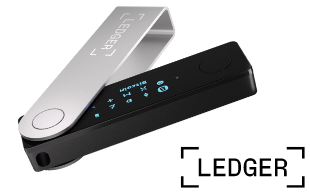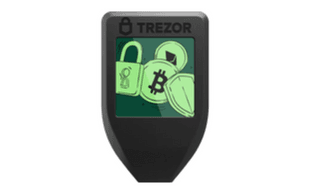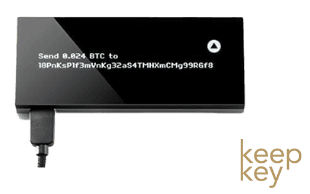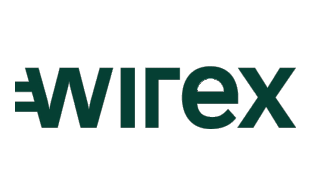Disclaimer: This page is not financial advice or an endorsement of digital assets, providers or services. Digital assets are volatile and risky, and past performance is no guarantee of future results. Potential regulations or policies can affect their availability and services provided. Talk with a financial professional before making a decision. Finder or the author may own cryptocurrency discussed on this page.
What is a Litecoin wallet?
If you're planning to buy Litecoin, one of the key steps is finding a wallet where you can safely store your LTC. There are a variety of wallets that support Litecoin, so the challenge is going through them all to find one that's right for your needs.
Litecoin wallets can be either hardware or software. The safest wallets to use are hardware wallets, as they store LTC offline. Software wallets can be desktop applications, browser extensions or mobile apps. Software wallet technology is still safe when used correctly, but not as safe as hardware wallets.
What to look for in a Litecoin wallet?
Make sure you look for the following key features when comparing Litecoin wallets:
- Simple interface: Some wallets can be difficult to understand and navigate through, especially for someone new to the world of cryptocurrency. This could lead to lost funds, mistaken transfers and a lack of security. Look for a wallet that's user-friendly and simple to understand.
- Support and development: Check out the development team behind the wallet – is the wallet constantly being updated and improved to make it more functional and to provide increased security? It's also a good idea to investigate what sort of support a wallet provider offers in case of a data breach or malfunction.
- Security and back-up features: Just as with a physical wallet, security is paramount for your digital asset wallet. Research your wallet's reputation for security and any security features it has – for example, 2-factor authentication, as well as how easy it is to make a back-up.
- Private key control: Does the wallet allow you to control your private key, or is this left with a third party? When you control the private key, you control your Litecoin. When storing crypto on an exchange, it holds your private keys.
- New address: Look for a wallet that is hierarchical deterministic (HD), which means that it always uses a new address for transactions. This increases financial privacy.
- Anonymity: If remaining anonymous is important to you, it's essential to check what sort of registration information you'll need to provide to use a wallet.
What is a recovery phrase?
When you initialize a Litecoin wallet, it will typically ask you to write down a recovery phrase. This list of 12, 18 or 24 words (typically 12 or 24) can be used to recover funds should the wallet itself be lost or broken. Unlike with a physical wallet, if someone loses or breaks a Litecoin wallet, it doesn't mean that the funds are lost. LTC can be recovered by downloading a new Litecoin wallet and importing the recovery phrase.
Recovery phrases go by many names. Depending on the wallet you're using, the recovery phrase may sometimes be called:
- 12-word phrase
- 24-word phrase
- Seed phrase
- Back-up phrase
- Recovery phrase
- Secret phrase
While wallets store keys, the recovery phrase is not a key. Rather, it's a random set of words that is used to obtain the keys.
What is a private key?
A private key is what proves ownership of a Litecoin balance. Private keys unlock Litecoin located at that particular address and they are usually stored in your Litecoin wallet and are encrypted by a password that is set by you. Keep in mind that the private key is derived from the recovery phrase, meaning that if anyone gains access to a recovery phrase, they can use it to derive private keys and steal the Litecoin that the private keys unlock.
What types of Litecoin wallets exist?
There are 3 main types of crypto wallets: hardware, software and exchange wallets. They can be further categorized as non-custodial or custodial.
With a non-custodial wallet, you're in possession of the private key and are ultimately responsible for the safekeeping of funds within the wallet.
In contrast, a custodial wallet doesn't give you access to the private key. Custodial wallets are usually provided by financial services such as exchanges. With custodial wallets, if the provider is hacked or otherwise compromised, any funds kept with them are at risk of being stolen by attackers.
For more crypto wallet information, read Finder's guide here.
| Wallet type | Ownership | Security | Price |
|---|---|---|---|
| Hardware | Non-custodial |
|
$80+ |
| Software | Non-custodial / custodial |
| Free |
| Exchange | Custodial |
|
Free |
Wallet definitions
- Non-custodial – You control your funds
- Custodial – Third party controls your funds
- Air gapped – Device itself is never connected to the Internet
- Cold storage – Wallet is not connected to the Internet which removes 1 attack vector
- Hot storage – Wallet is connected to the Internet and thus vulnerable to attack
Litecoin-specific wallets
LitewalletLitewallet is made by the Litecoin Association and LTC creator Charlie Lee, and is available for both Android and iOS. It's a non-custodial Litecoin-only wallet. There are a variety of other wallets that support Litecoin, such as TrustWallet or Coinbase wallet, but they are not dedicated Litecoin wallets.
How to withdraw Litecoin from an exchange into a wallet
There are 3 simple steps to withdrawing your Litecoin from an exchange into a wallet:
- Download/set up the Litecoin wallet of choice, whether hardware or software.
- Grab your public/receiving address from the Litecoin wallet. Double check it when pasting onto the exchange withdrawal page.
- Send the Litecoin withdrawal transaction via the exchange using the address you copied in step 2. Check the progress on the Litecoin block explorer.
How to deposit Litecoin onto an exchange from a wallet
There are 2 simple steps to depositing Litecoin onto an exchange from a wallet:
- Go to the exchange and find your Litecoin deposit address. Copy it. Double check it when pasting into the wallet recipient address field.
- Send LTC from the wallet using the address. Check the progress on the Litecoin block explorer.
Best Litecoin hardware wallets
Ledger Nano X Wallet |
Trezor Model T Wallet |
KeepKey Wallet |
 |
 |
 |
|
|
|
|
|
|
|
|
|
Supported assets 5,500+ |
Supported assets 1,000+ |
Supported assets 7+ |
|
Price (USD) $149 |
Price (USD) $129 |
Price (USD) $49 |
See more of the best crypto wallets
Best Litecoin software wallets
The best Litecoin software wallets are the ones that are the easiest to use and come with the most options to secure Litecoin. All software wallets should give the user an option to lock the wallet with a custom password. Having the option to implement some sort of 2-factor authentication (Google Authenticator or Email) is a bonus. Finally, a software wallet is typically secured with a traditional email and password combination. These sorts of wallets are ideal for someone who is not used to remembering passwords, and for securely storing passphrases.
| Security | |
|---|---|
| Desktop | Wallet is password protected + computer password |
| Mobile | PIN/Password + Pin/Face/Fingerprint to access mobile device |
| Exchange | Email/Password + 2FA |
Best Litecoin desktop wallets
Exodus Wallet |
Coinomi Wallet |
Atomic Wallet |
 |
 |
 |
|
|
|
|
|
|
|
|
|
Supported assets 1,000+ |
Supported assets 1,770+ |
Supported assets 1,350+ |
See more of the best crypto wallets
Best Litecoin mobile wallets
Coinbase Wallet |
Wirex Wallet |
Sugi Wallet |
 |
 |
 |
|
|
|
|
|
|
|
|
|
Supported assets 450,000+ |
Supported assets 100+ |
Supported assets 6+ |
|
Price (USD) $63.49 |
See more of the best crypto wallets
Best Litecoin browser wallets
Cryptonator Wallet |
GateHub Wallet |
Atomic Wallet |
 |
 |
 |
|
|
|
|
|
|
|
|
|
Supported assets 10+ |
Supported assets 7+ |
Supported assets 1,350+ |
See more of the best crypto wallets
Litecoin wallet best practices
Remember the following tips when storing Litecoin to help ensure the security of your crypto holdings:
- Enable 2FA. If the wallet you choose supports 2-factor authentication, make sure you enable this feature to provide higher security for your Litecoin.
- Back it up. Copy down the back-up phrase for your wallet and store it in a safe place. This protects you if you lose or break your wallet. It is not recommended to store your back-up phrase online – if the place where you keep your device is hacked, your funds may also be lost.
- Double-check everything. Make sure emails received from your wallet provider are actually from the provider and not a scammer posing as the company or provider. When writing down your phrase, print legibly, and use a pen so that the words do not fade with time.
- Consider offline storage. Hardware wallets are generally considered to be the safest storage option. You may wish to consider storing all your Litecoin offline, or potentially keeping a small amount in a web or desktop wallet and the bulk of your holdings offline.
- Use a strong password. Don't be lazy when creating a password. A strong password includes letters, numbers and symbols, and is at least 16 characters long.
- Not an all-in-one wallet. It is recommended to keep your Litecoin in more than 1 wallet. You will likely need to have some Litecoin in a browser wallet for trading, some in a software wallet for short-term spending, and some in cold storage hardware for long-term savings. By keeping your funds in different wallets, you decrease the risk of losing everything if a storage method is compromised.
Frequently Asked Questions
Do you need a wallet for Litecoin?
Yes, a Litecoin wallet is needed to store LTC.
Where do you store Litecoin?
You can store Litecoin in a hardware, software or exchange wallet.
Are litecoin wallets safe?
Yes, Litecoin wallets are safe as long as you keep the recovery phrase somewhere safe, remember your password, and don't give anyone your private keys.
Ask a question
More guides on Finder
-
Best Wallet Review 2025
Best Wallet is a secure crypto wallet supporting 1,000+ assets with enhanced security. Find out how to deposit crypto and avoid fees today.
-
NGRAVE ZERO review
Learn about the capabilities, benefits and pitfalls of the NGRAVE ZERO hardware wallet.
-
Trezor Model T vs Model One
We compared Trezor and Ledger hardware wallets to see which has the most to offer.
-
Ledger Stax review
Learn how the Ledger Stax stands out compared to previous Ledger hardware wallets.
-
11 best non-custodial wallets
Our round-up of the best non-custodial crypto wallets and why they’re so important.
-
Zengo wallet review
Zengo is an innovative mobile crypto wallet that allows users to retain custody while offering easy access.
-
MetaMask wallet review and guide
All you need to know about MetaMask – the browser extension digital wallet and a user-friendly bridge to the world of Ethereum decentralised applications.
-
9 best crypto hardware wallets
Compare the security, features and capabilities of some of the best crypto hardware wallets on the market.
-
Trezor Model T review
See how the Trezor Model T measures up as a crypto hardware wallet.
-
Trezor Model One review
See how the Trezor One compares in the world of crypto hardware wallets.
